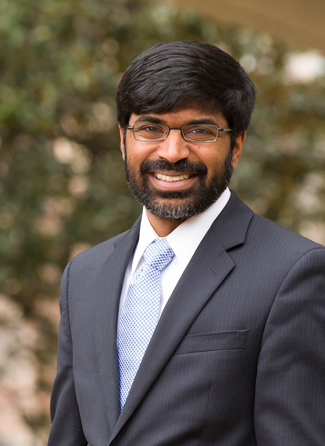
The growing politicization of Supreme Court nominations over the past decade has become a real threat to the institution’s legitimacy, and the only way to save it may be to radically reshape it, argues Ganesh Sitaraman, professor of law at Vanderbilt Law School.
In How to Save the Supreme Court, forthcoming in the Yale Law Journal, Sitaraman and his coauthor, Daniel Epps of Washington University, propose two constitutionally plausible configurations designed to minimize the partisan influences that have come to undermine the integrity of the nation’s highest court.
“The Supreme Court’s legitimacy depends on it being an impartial body, not a partisan institution,” Sitaraman said. “There’s an urgent need to consider reforms that will preserve the role of the Court in the long run.”
The Constitution calls for the establishment of a Supreme Court, but it doesn’t have much to say on what it actually has to look like. The current nine-justice configuration has existed since the late 19th century—long enough for it to feel immutable, perhaps, but in fact, it is just a very long-standing norm.
In their article, Sitaraman and Epps argue that the key to saving the Supreme Court is to tap the entire federal court of appeals for service. Because there are 180 appeals court judges, they make up a much more politically diverse body than the Supreme Court. And like Supreme Court justices, they are already appointed by the president and serve for life, meaning they would not need to go through a second confirmation process.
Sitaraman and Epps lay out two different ways this plan could work:
The Supreme Court Lottery
Under a lottery system, every judge on the federal court of appeals is appointed as an associate justice of the Supreme Court. A bench of nine justices is chosen at random to serve for two weeks at a time, making it impossible to game the court’s composition to favor one party’s policies over another over a lengthy amount of time.
Additionally, these panels would not choose their own cases. Instead, they would hear cases chosen for them by a previous panel, and then choose cases for the next randomly-selected panel in turn.
“This approach prevents a conservative or liberal-majority panel from cherry-picking cases designed to advance their own agendas,” Sitaraman explained.
Finally, the researchers propose that overturning a federal statute should require a two-thirds, rather than simple, majority. This would prevent destabilizing the law, while giving appropriate deference to the democratic process.
The Balanced Bench
Another way to neutralize the impact of polarization could be to simply lean into it. A “balanced bench” approach would embrace the reality of partisanship by appointing five Democrat-selected justices and five Republican-selected ones. Those 10 justices would then select an additional five justices from the circuit court, chosen two years in advance, to serve for one year and one year only.
Crucially, these five justices must be chosen by consensus for the Court to have a quorum and be able to hear cases.
“The judges selected are likely to be well-respected jurists on the federal bench,” Sitaraman said.
Selecting these justices two years in advance also reduces the likelihood that they might be chosen specifically for their views on an upcoming case. Limiting them to a single one-year term removes the temptation to tailor their decisions in order to selected again. These temporary justices would not participate in the selection of cases, further reducing the temptation of either wing to tailor the Court’s docket to the personalities of the judges.
“We believe both proposals are constitutionally possible,” Sitaraman said. “What isn’t up for debate is that the Supreme Court is at great risk of becoming seen as a partisan institution – and it will need to change in order to remain a legitimate institution in the eyes of all our citizens.”